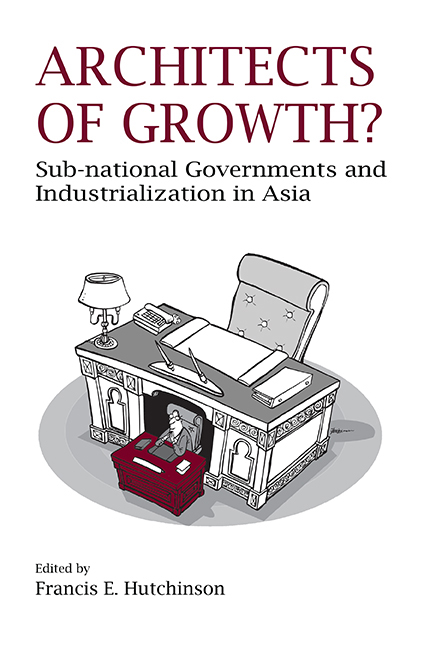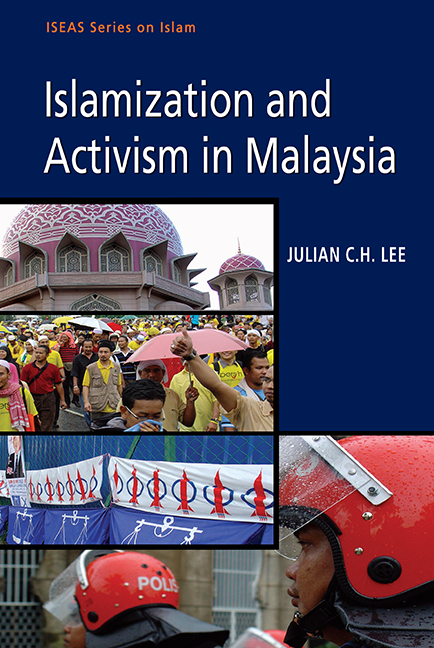308 results in Books and Monographs

Ethnic Groups Across National Boundaries in Mainland SEA
-
- Published by:
- ISEAS–Yusof Ishak Institute
- Published online:
- 21 October 2015
- Print publication:
- 01 January 1990

Law and the Chinese in Southeast Asia
-
- Published by:
- ISEAS–Yusof Ishak Institute
- Published online:
- 21 October 2015
- Print publication:
- 22 July 2002

Nation Building
- Five Southeast Asian Histories
-
- Published by:
- ISEAS–Yusof Ishak Institute
- Published online:
- 21 October 2015
- Print publication:
- 08 August 2005

The Indonesian Crisis
- A Human Development Perspective
-
- Published by:
- ISEAS–Yusof Ishak Institute
- Published online:
- 21 October 2015
- Print publication:
- 05 December 2002

Post-war Laos
- The Politics of Culture, History and Identity
-
- Published by:
- ISEAS–Yusof Ishak Institute
- Published online:
- 21 October 2015
- Print publication:
- 17 February 2006

Indonesia
- Towards Democracy
-
- Published by:
- ISEAS–Yusof Ishak Institute
- Published online:
- 21 October 2015
- Print publication:
- 30 April 2009

Getting a Dial Tone
- Telecommunications Liberalisation in Malaysia and the Philippines
-
- Published by:
- ISEAS–Yusof Ishak Institute
- Published online:
- 21 October 2015
- Print publication:
- 12 October 2007

Decentring and Diversifying Southeast Asian Studies
- Perspectives from the Region
-
- Published by:
- ISEAS–Yusof Ishak Institute
- Published online:
- 21 October 2015
- Print publication:
- 30 June 2011

Houston of Asia
- The Singapore Petroleum Industry
-
- Published by:
- ISEAS–Yusof Ishak Institute
- Published online:
- 21 October 2015
- Print publication:
- 01 January 1989

Architects of Growth?
- Sub-national Governments and Industrialization in Asia
-
- Published by:
- ISEAS–Yusof Ishak Institute
- Published online:
- 21 October 2015
- Print publication:
- 28 November 2013

Autonomy and Armed Separatism in South and Southeast Asia
-
- Published by:
- ISEAS–Yusof Ishak Institute
- Published online:
- 21 October 2015
- Print publication:
- 27 July 2012

Buddhism, Legitimation, and Conflict
- The Political Functions of Urban Thai Buddhism in the 19th and 20th Centuries
-
- Published by:
- ISEAS–Yusof Ishak Institute
- Published online:
- 21 October 2015
- Print publication:
- 01 January 1989

Islamization and Activism in Malaysia
-
- Published by:
- ISEAS–Yusof Ishak Institute
- Published online:
- 21 October 2015
- Print publication:
- 14 May 2010

By Design or Accident
- Reflections on Asian Security
-
- Published by:
- ISEAS–Yusof Ishak Institute
- Published online:
- 21 October 2015
- Print publication:
- 07 July 2010

Divided Over Thaksin
- Thailand's Coup and Problematic Transition
-
- Published by:
- ISEAS–Yusof Ishak Institute
- Published online:
- 21 October 2015
- Print publication:
- 17 August 2009

Australia's Foreign Economic Policy and ASEAN
-
- Published by:
- ISEAS–Yusof Ishak Institute
- Published online:
- 21 October 2015
- Print publication:
- 12 February 2010

Problems of Democratisation in Indonesia
- Elections, Institutions and Society
-
- Published by:
- ISEAS–Yusof Ishak Institute
- Published online:
- 21 October 2015
- Print publication:
- 06 April 2010

Looking East to Look West
- Lee Kuan Yew's Mission India
-
- Published by:
- ISEAS–Yusof Ishak Institute
- Published online:
- 21 October 2015
- Print publication:
- 27 October 2009

Older Persons in Southeast Asia
- An Emerging Asset
-
- Published by:
- ISEAS–Yusof Ishak Institute
- Published online:
- 21 October 2015
- Print publication:
- 06 August 2009

Done Making Do
- 1Party Rule Ends in Malaysia
-
- Published by:
- ISEAS–Yusof Ishak Institute
- Published online:
- 21 October 2015
- Print publication:
- 16 April 2013

